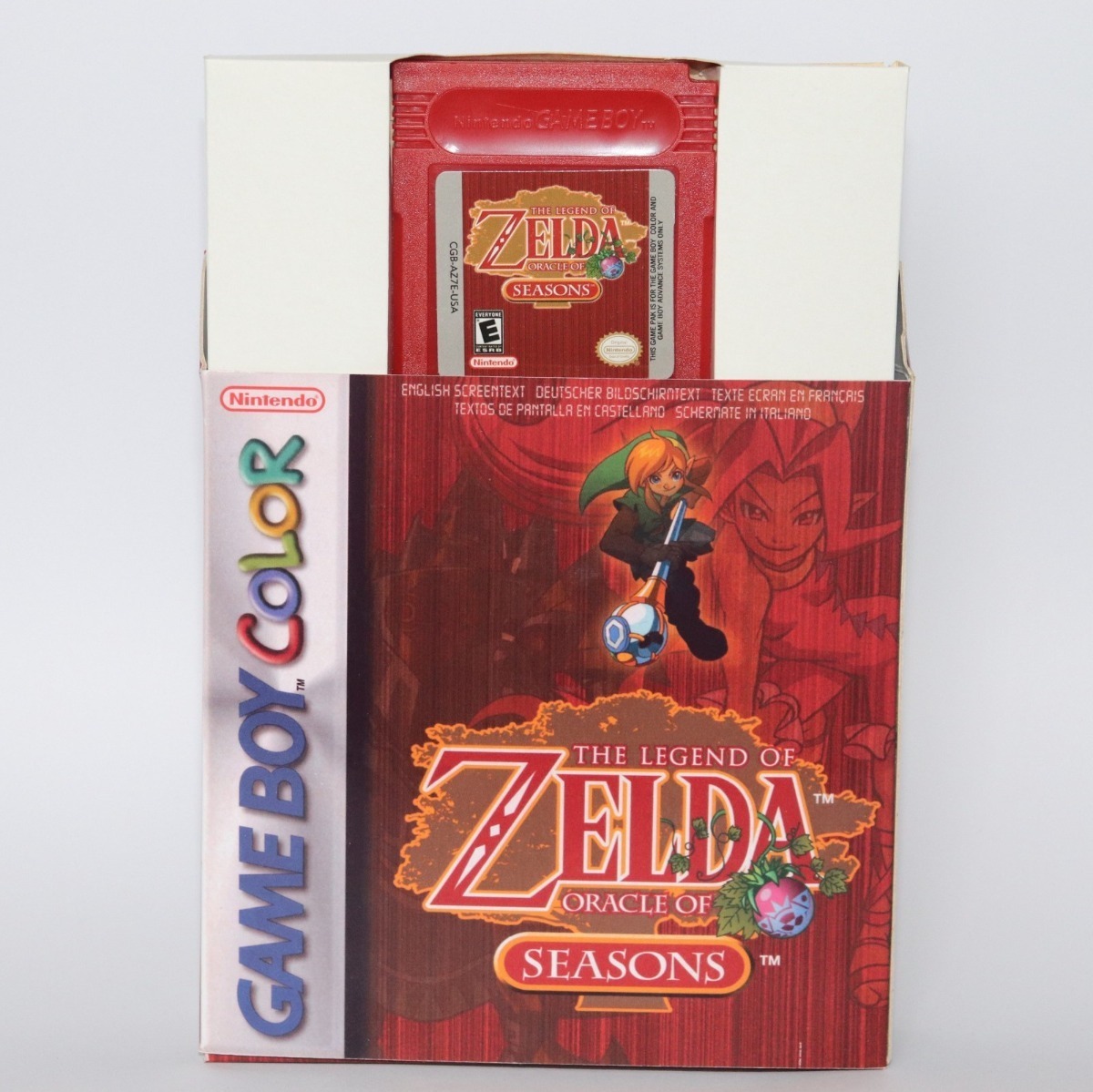

Holodrum’s four seasons are out of order, with the weather changing on the fly between regions. Progression often feels like a puzzle, especially when working around roadblocks early on.

The kingdom itself is quite large, sprawling when compared directly to Koholint Island. Holodrum is distinct from Hyrule where it counts. This all makes sense since Seasons is rooted in a remake of the first game, but it isn’t as if Holodrum is without its novelties. A kingdom geographically similar to Hyrule as seen in the original Legend of Zelda, Holodrum has its own northern mountainside, a final dungeon in the northwest corner, and dozens of old men hidden amongst the land. Holodrum has one of the densest worlds in a 2D Zelda game, if not the densest after A Link to the Past & A Link Between Worlds. Oracle of Seasons takes after Link’s Awakening and Majora’s Mask by setting itself away from Hyrule– the kingdom only ever shown during the opening cinematic. But it just kept growing as development progressed and gradually turned into an original game.” – Hidemaro Fujibayashi, Director/Planner/Scenario Writer

At first, we’d only planned on creating a game one-tenth the size of the final version. I wanted to combine both those aspects (action-RPG and an actual scenario) this time around. The original Zelda was a pure action-RPG and didn’t have much of a story to begin with.
COLOR ORACLE OF SEASONS SERIES
“I believe the Zelda series really only started to have scenarios after the hardware specifications improved. With so many inherent changes, however, The Hyrule Fantasy ended up leaving the region altogether. Series creator Shigeru Miyamoto likewise asked Fujibayashi to pen a new story for the original Legend of Zelda, suggesting a fairly comprehensive remake as the end goal. Not only was this remake never intended to be a standalone entry, it would kick start its own sub-series while featuring seasons at the forefront of the gameplay. It was also decided that it would be a series.” That is to say, the fact that it would be on the Game Boy Color, the use of the four seasons, and the decision to retain the feel of the 2D Zelda games. “The core of the game was pretty much decided.

Considering director Hidemaro Fujibayashi’s own reflection on Flagship’s Zelda proposal, much of what would define Seasons was always present Where Oracle of Ages was the sole survivor of the four original games, Oracle of Seasons was a brand new game morphed out of the Zelda 1 remake. These six games would eventually be trimmed into a trilogy slated to release in the summer, autumn, & winter of 2000, before settling as a duology that would launch simultaneously in 2001. These games would not be developed by Nintendo themselves, but by Flagship– a subsidiary of Capcom that was also funded in part by Nintendo and Sega. This remake would be accompanied by five other games– a remake of Zelda II: The Adventure of Link and four original titles– all developed for the Game Boy Color. The game that would eventually become Oracle of Seasons began life as a remake of the original Legend of Zelda. Seasons in particular brings with it quite an interesting history. The Legend of Zelda: Oracle of Ages & Oracle of Seasons are very much two halves of the same grand adventure, but they’re both worth examining on their own merits. “It is an endless cycle of life… the changing seasons!”


 0 kommentar(er)
0 kommentar(er)
